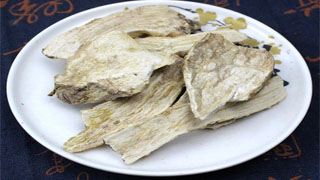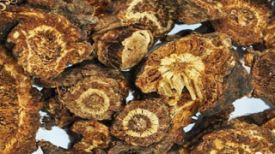
1. Alias
White Wolf Venom, Yellow Skin Wolf Venom, Cat Eyes.
2. Plant morphology
Perennial herb, 30-60 cm tall. Plants have white milk. Root fleshy, elongated cone-shaped, outer skin reddish brown or brown. The stem is upright, single, sparsely covered with white soft hairs, especially with many internodes. Mutual growth of leaves; Near no handle; 3-5 whorls of leaves above the middle of the stem; Leaves are oblong in shape. The inflorescence consists of multiple divergent umbrella inflorescences, terminal, usually with 5 umbrella stalks, each stalk giving rise to 3 or more small stalks; The cup-shaped bracts have soft hairs on the outside, nearly hairless on the inside, eyelashes on the edges, 4 glands, and are kidney shaped. There are many male flowers in the bracts, with only one stamen per flower; One female flower grows in the center of the bracts, with only one pistil, often extending from the bracts and drooping. The ovary is 3-chamber, the style is 3-chamber, and the stigma is 2-lobed. Capsules densely covered in short hairs or hairless. The flowering period is from May to June, and the fruiting period is from June to July.
3. Origin distribution
Born in meadows and sunny hilly areas. Distributed in Heilongjiang, Jilin, Liaoning, Inner Mongolia, Hebei, Henan, Shanxi and other places.
4. Harvesting and processing
Dig, wash, slice, and dry in spring and autumn.
5. Characteristics of medicinal herbs
The root is a circular or elongated block with a diameter of 1.5-8 centimeters and a thickness of 0.3-4 centimeters. The outer skin is brownish yellow, and the cut surface texture or ring pattern appears black brown. After immersion in water, there is stickiness, and when torn open, sticky threads can be seen. Slightly fragrant and slightly pungent in taste.
6. Sexual Taste Returning to the Classics
Flat in nature, spicy in taste. Return to the liver meridian and spleen meridian.
7. Effect and Function
Scattered and insecticidal. It belongs to insecticidal and anti itch drugs.
8. Clinical application
External use: In moderation, grind powder or make ointment, apply and compress. Oral administration: decoct the soup and use 1-2.4 grams after processing, or add it into pills or powder. Used externally for lymph node tuberculosis, psoriasis, and eradication of maggots.
9. Pharmacological research
It has functions such as anti-tumor, killing maggots, and eliminating larvae.
10. Chemical composition
It mainly contains ingredients such as lupine alcohol, wolfberry Euphorbia A, wolfberry Euphorbia B, etc.
11. Usage taboos
This product is toxic and should be taken with caution. Pregnant women are prohibited from taking it. Not suitable for use with tantric monks.
12. Compatibility prescription
① Treat dry and wet scabies: Crush fresh wolfberry, add raw lard and mix well, wrap it with cloth and apply it to the affected area. (Anhui Chinese Herbal Medicine)
② Treating stubborn ringworm: Grind wolfberry into fine powder, apply cotton seed oil or vinegar to the affected area. (Anhui Chinese Herbal Medicine)
③ Treating psoriasis and neurodermatitis: Apply wolfberry ointment once every other day. (National Compilation of Chinese Herbal Medicines)
⊙ The content of the article is for clinical reference only. Non TCM professionals are not allowed to test drugs.


